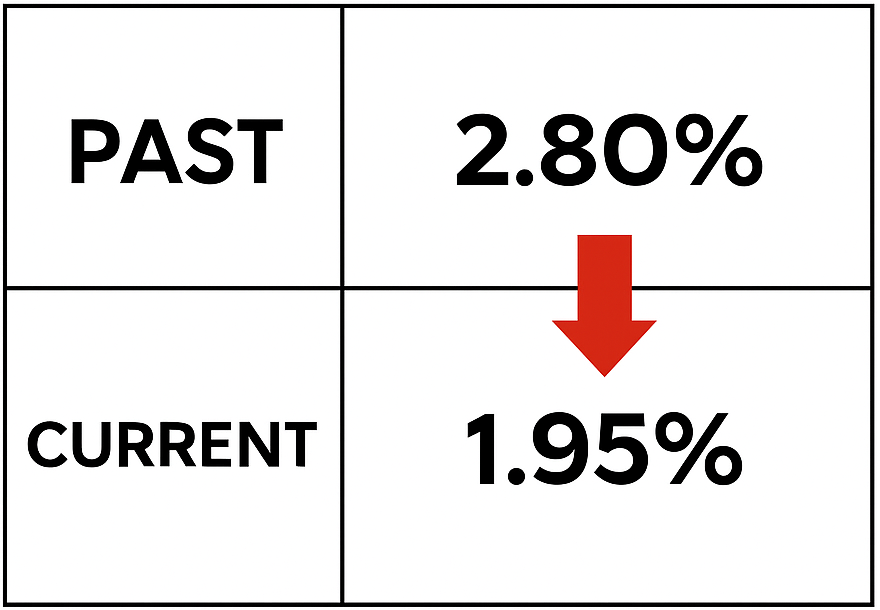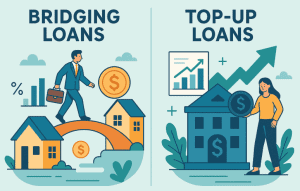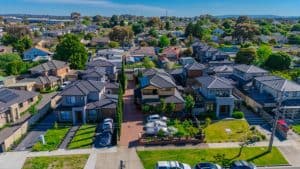Thinking about buying a home in Singapore? Choosing the right home loan can feel overwhelming with all the jargon—LTV, TDSR, SORA—and so many loan types to consider.
But don’t worry! In this guide, I’ll wal
k you through how to choose the best home loan in Singapore, from understanding key terms to comparing HDB and bank loans. We’ll cover everything you need to know to get the best mortgage rate and make the process as smooth as possible.
Ready to dive in? Let’s get started!
Understanding Home Loan Basics
Navigating the world of home loans in Singapore doesn’t have to be complicated. Let’s break down the essentials so you can start your home-buying journey with confidence.
Comparison of Home Loan Types in Singapore (HDB, Bank, Private)
| Loan Type | Best For | Interest Rate | Key Features |
|---|---|---|---|
| HDB Loan | HDB flat buyers | 2.6% p.a. | Fixed rate, stable payments, up to 80% LTV, no early repayment fee |
| Bank Loan | HDB/Private property buyers | From 3% (floating) | Fixed/floating rates, lower rates initially, flexible refinancing |
| Private Home Loan | Condo/Landed property buyers | From 3% (floating) | Tailored packages, flexible interest rates, competitive offers |
Expert Tip: Compare HDB loans vs. bank loans to see which fits your budget and goals best. For more details, see our HDB vs. bank loan guide.
How much can I borrow? (LTV, TDSR, MSR)
Before you start house hunting, it’s important to understand how much you can actually borrow. Here’s what affects your eligibility:
- LTV (Loan-to-Value):
- Maximum loan amount vs. property value
- Banks: up to 75%; HDB loan: up to 80%
- Maximum loan amount vs. property value
- TDSR (Total Debt Servicing Ratio):
- Total monthly debt payments capped at 55% of your gross monthly income
- Total monthly debt payments capped at 55% of your gross monthly income
- MSR (Mortgage Servicing Ratio):
- For HDB flats and ECs only
- Home loan payments capped at 30% of gross monthly income
- For HDB flats and ECs only
Useful Link: Use our mortgage calculator to estimate your loan eligibility and monthly payments. For more details, see our HDB vs. bank loan guide.
What’s the difference between fixed and floating rates?
Choosing between fixed-rate and floating-rate packages is one of the biggest decisions you’ll make:
Comparison of Fixed and Floating Home Loan Rates in Singapore
| Rate Type | What It Means | Pros & Cons |
|---|---|---|
| Fixed Rate | Interest rate is locked for 1–5 years | Predictable payments; may be higher initially; limited flexibility |
| Floating Rate | Tied to SORA/board rates | Potential for lower rates initially; can change over time; rate may rise with market conditions |
Pro Tip: Use our mortgage rate comparison tool to explore the latest rates from top banks. If you’re not sure which suits you best, speak to our mortgage experts for personalized advice.
Comparing HDB Loans and Bank Loan
Choosing between an HDB loan and a bank loan is a key decision every homebuyer faces. Let’s unpack the differences so you can make an informed choice that suits your needs.
Interest rates: HDB loan vs. bank loan
Interest rates can make a big difference to your monthly repayments. Here’s how they compare:
Home Loan Interest Rates in Singapore: HDB vs Bank Loan
| Loan Type | Interest Rate | Notes |
|---|---|---|
| HDB Loan | 2.6% p.a. (pegged to CPF OA rate + 0.1%) | Fixed rate; stable payments; no sudden rate changes |
| Bank Loan | From 3% p.a. (floating); fixed rates also available | Rates fluctuate based on market conditions (SORA/Board rates); may be lower than HDB rates initially |
Tip: Check the latest home loan interest rates to compare HDB and bank loan rates in real time.
Eligibility and maximum loan amount
Here’s a quick breakdown of who can apply and how much they can borrow:
- HDB Loan:
- Must buy an HDB flat
- Monthly income ceiling applies (currently $14,000 for families, $7,000 for singles)
- Up to 80% Loan-to-Value (LTV) ratio
- Must buy an HDB flat
- Bank Loan:
- Available for HDB flats, private properties, condos
- No income ceiling, but stricter TDSR (55% of gross monthly income)
- Up to 75% LTV ratio
- Available for HDB flats, private properties, condos
Key pros and cons of each option
Here’s a quick comparison of the key pros and cons:
HDB Loan vs Bank Loan: Pros and Cons Breakdown
| Loan Type | Interest Rate | Cons |
|---|---|---|
| HDB Loan | Stable interest rate; higher LTV; no early repayment penalty; easy eligibility | Stable interest rate; higher LTV; no early repayment penalty; easy eligibility |
| Bank Loan | Potentially lower interest rates; flexible packages (fixed/floating); no income ceiling | Rates can fluctuate; lower LTV; lock-in period and early repayment fees |
Pro Tip: Speak with our experts at Ace Mortgage to get personalized advice and the best home loan deals.
Choosing the Right Interest Rate Package
Picking the right interest rate package can save you thousands of dollars over the life of your loan. Let’s break down the options so you can choose the best fit for your needs.
What is a fixed-rate home loan?
A fixed-rate home loan locks in your interest rate for a set period—typically 1 to 5 years. This means your monthly repayments stay the same, making it easier to budget.
Key benefits:
- Stability: No surprises with your monthly payments
- Easier budgeting, especially in the early years
Things to watch for:
- Rates might be slightly higher than floating rates
- After the lock-in period, the loan usually converts to a floating rate
Tip: Explore Floating interest-rate home loans guide from banks like DBS, UOB, and OCBC to see the latest packages.
What is a floating-rate home loan?
A floating-rate home loan has an interest rate that changes over time, usually pegged to a reference rate (like SORA) or the bank’s board rate.
Key features:
- Initially lower rates than fixed-rate packages
- Rates can rise or fall depending on market conditions
Common reference rates:
- SORA (Singapore Overnight Rate Average)
- Board rate (set by the bank)
Want to dive deeper? Check out our fixed vs. floating home loan comparison guide to find the package that best suits your needs.
SORA, SIBOR, and Board Rates explained
Understanding these reference rates helps you make an informed choice:
SORA vs SIBOR vs Board Rate: Understanding Singapore’s Home Loan Benchmarks
| Rate | What It Is | Current Trend |
|---|---|---|
| SORA | Singapore Overnight Rate Average; based on actual transactions | Transparent; increasingly popular for floating loans |
| SIBOR | Singapore Interbank Offered Rate; phased out by 2024 | Replaced by SORA; still lingers in some legacy loans |
| Board Rate | Set internally by banks; may not follow market rates closely | Varies by bank; can change at the bank’s discretion |
Expert Tip: Use our mortgage rate comparison tool to find the best interest rates from top banks. Need help deciding? Speak to our mortgage advisors for personalized recommendations.
Home Loan Application Process
Applying for a home loan in Singapore might feel intimidating at first, but it’s actually quite straightforward once you know the steps. Here’s how to navigate the process confidently:
Getting pre-approval (HLE or IPA)
Before you shop for your dream home, it’s a smart move to get pre-approval. This helps you understand your budget and strengthens your negotiating power.
- HLE (HDB Loan Eligibility Letter):
- For HDB loans only
- Valid for 6 months
- Confirms your eligibility for an HDB loan
- For HDB loans only
- IPA (In-Principle Approval):
- For bank loans (including private property)
- Valid for 30-90 days, depending on the bank
- Helps you gauge your maximum loan amount
- For bank loans (including private property)
Use our mortgage calculator to estimate your affordability and monthly repayments. For more info, visit our guide on IPA.
Paying the Option to Purchase (OTP)
Once you’ve found your perfect home, you’ll need to pay the Option to Purchase (OTP)—a small deposit that reserves the property for you.
- Typically 1% of the purchase price (HDB resale) or 1-5% (private property)
- Gives you 21 days (for HDB) or 14 days (for private property) to exercise the option
- During this period, finalize your loan details and engage a lawyer
Before paying OTP, compare home loan rates to make sure you’re getting the best deal.
Completing the loan application and disbursement
Once you’ve exercised the OTP, it’s time to submit the full loan application and get your financing sorted.
- Submit all required documents: income proof, CPF statements, OTP copy, etc.
- Bank or HDB will conduct a valuation of the property
- Receive your Letter of Offer (LO)—review terms carefully!
- Disbursement typically happens at the completion date, ensuring the seller gets paid and you officially own your home
Need some expert help? Reach out to a trusted mortgage broker who can guide you through each step and make the process as smooth as possible.
Interest Rates and Bank Promotions
Interest rates can make or break your monthly budget. Let’s dive into the latest home loan rates in Singapore and highlight the best bank deals and time-sensitive promotions.
Latest HDB loan rates
The HDB loan interest rate has remained steady at 2.6% p.a. for years, making it a stable choice for many buyers. This rate is pegged at 0.1% above the CPF Ordinary Account rate, providing predictability and peace of mind.
Tip: While the HDB loan rate is stable, don’t forget to compare it with bank loan rates to see if you can get a better deal.
Best bank loan offers and deals
Bank loan rates can fluctuate depending on market conditions and promotions. Here’s a quick snapshot of some of the best bank loan packages available now:
DBS vs OCBC vs UOB Home Loans: Interest Rates & Features Compared
| Bank | Rate Type | Typical Rate (p.a.) | Notes |
|---|---|---|---|
| DBS | Floating (SORA) | From 3% | Flexible packages; DBS FHR6 for stability |
| OCBC | Fixed/Board | From 3% | Attractive lock-in periods; board rates available |
| UOB | Fixed/Floating | From 3% | Variety of packages; occasional promotions |
Evaluating time-limited bank promotions
Banks often roll out limited-time promotions—but are they always the best deal? Here’s how to evaluate them:
- Look beyond the headline rate. Check for hidden fees, lock-in periods, and penalty clauses.
- Consider the repricing or refinancing options after the promotional period ends.
- Ask about subsidies or legal fee waivers—these can offset some costs.
Learn more: Check out our refinancing guide to understand how switching lenders or repricing can help you save in the long run.
Financing Options for Different Needs
Homeownership journeys aren’t one-size-fits-all. Let’s explore different financing options for unique situations, so you can find the best fit for your needs.
What is a bridging loan?
A bridging loan helps you transition smoothly from your current home to your new one—especially useful if you’re buying before selling.
Key features:
- Short-term loan (typically 6 months)
- Covers the downpayment or purchase price while you wait for proceeds from the sale of your existing property
- Usually at a higher interest rate than standard home loans
Tip: Learn more about bridging loans and whether they’re right for you in our bridging loan guide.
Understanding buildings under construction (BUC) loans
Buying a property under construction? That’s where BUC loans come in handy.
Key Features of BUC (Building Under Construction) Home Loans in Singapore
| Feature | What It Means |
|---|---|
| Progressive Payments | You pay based on construction milestones (foundation, structure, etc.) |
| Interest-Only Payments | Some banks let you pay only interest during the construction period |
| Conversion to Standard Loan | Loan converts to regular home loan upon building completion |
Personally, I’d always recommend weighing your budget and cash flow before picking a BUC loan option—some buyers love the flexibility of progressive payments, while others prefer knowing their exact monthly costs upfront.
Capitalised interest vs. simultaneous repayment
When financing a new property (especially under construction), you might choose between capitalised interest or simultaneous repayment:
- Capitalised Interest:
- You pay only interest during construction
- Principal repayments begin after the building is completed
- You pay only interest during construction
- Simultaneous Repayment:
- You pay both principal and interest right from the start
- Monthly payments are higher initially but reduce total interest costs
- You pay both principal and interest right from the start
🔗 Explore more: Check out our mortgage planning guide to learn which repayment option fits your budget.
Refinancing and Repricing Your Home Loan
Thinking of saving money on your home loan? Whether you’re looking to lower your monthly payments or get a better rate, repricing and refinancing are two popular ways to do it. Let’s explore how each option works and what to consider before making the switch.
When should you reprice your home loan?
Repricing is when you switch to a different loan package with your existing bank, often with a lower interest rate.
Consider repricing when:
- Your lock-in period has expired (usually 2-3 years)
- Your bank offers a better rate internally compared to your current rate
- You want to avoid the hassle of legal fees or valuation reports
I’ve seen homeowners benefit from repricing when interest rates drop, especially if they’re happy with their bank’s service. It’s a hassle-free way to save on monthly payments without switching lenders.
How does refinancing work?
Refinancing involves moving your home loan from your current bank to a new one for better rates or features.
🔄 Step-by-Step Guide to Refinancing Your Home Loan
- Check lock-in period
Make sure your current loan is out of the lock-in period to avoid penalties. - Compare rates
Use a mortgage calculator to see potential savings. - Submit application
Provide income documents, CPF statements, and loan details to your new lender. - Legal work
Your lawyer will handle the discharge of your old loan and prepare documentation for the new one.
🔗 Learn more: Check out our detailed refinancing guides for private and HDB loans to make the process even easier.
Costs, subsidies, and fees to consider
Before refinancing or repricing, remember to factor in all potential costs:
- Legal fees: $2,000–$3,000 (may be subsidized by the new bank)
- Valuation fees: Around $200–$500
- Lock-in penalties: Often 1.5% of your outstanding loan if within the lock-in period
- Admin fees: Some banks charge a small processing fee
I always recommend checking if your new bank offers subsidies—some banks cover legal fees and even give you cash rebates to sweeten the deal.
Working with a Mortgage Broker vs. Going Direct
When it comes to securing a home loan in Singapore, you can either work with a mortgage broker or go straight to a bank. Let’s weigh the pros and cons so you can make the best decision for your needs.
Advantages of using a mortgage broker
Working with a mortgage broker offers several advantages:
- Access to multiple banks: Brokers compare rates and packages across different banks, saving you time.
- Personalized advice: They’ll help you navigate complex paperwork and eligibility criteria.
- Cost savings: Some brokers negotiate exclusive rates or rebates that aren’t always available directly from banks.
- No additional fees: Most brokers earn a commission from the bank, so their service is free for you.
Tip: If you want someone to handle the research and paperwork for you, a mortgage broker might be the way to go.
When it makes sense to go direct to the bank
While brokers can save time, going direct to the bank can also be a smart move in certain situations:
- Existing banking relationship: Some banks may offer loyalty rates or perks to existing customers.
- Simple loan application: If you’re confident in comparing rates and negotiating terms yourself.
- Promotions: Occasionally, banks run exclusive promotions that are only available when you apply directly.
Personal Insight: I’ve seen some homeowners prefer the direct approach when they already have a relationship with the bank or want to take advantage of loyalty offers.
Choosing the best loan partner for your needs
Ultimately, the choice between a broker and going direct comes down to your preferences:
Comparing Mortgage Brokers and Banks in Singapore: Pros and Differences
| Factor | Mortgage Broker | Direct to Bank |
|---|---|---|
| Convenience | One-stop service; compares multiple banks | DIY research required |
| Expertise | Personalized advice and recommendations | Bank staff may only offer info on their own loans |
| Rates & Packages | Often negotiates better deals | May get exclusive bank promotions |
Tip: Always read the fine print—lock-in periods, repricing terms, and hidden fees can affect your loan in the long run.
Home Loan Glossary and Jargon Buster
Feeling overwhelmed by all the home loan lingo? Let’s simplify some of the most important terms you’ll encounter, so you can make confident decisions.
Key terms: LTV, TDSR, MSR
These are the key figures banks use to decide how much you can borrow:
- LTV (Loan-to-Value):
- The percentage of the property value that you can borrow.
- Typically up to 75% for bank loans and 80% for HDB loans.
- The percentage of the property value that you can borrow.
- TDSR (Total Debt Servicing Ratio):
- Caps all your monthly debt obligations (including your home loan) at 55% of your gross monthly income.
- Caps all your monthly debt obligations (including your home loan) at 55% of your gross monthly income.
- MSR (Mortgage Servicing Ratio):
- Specific to HDB and EC buyers.
- Limits your home loan payments to 30% of your gross monthly income.
- Specific to HDB and EC buyers.
Tip: Want to see how these affect your loan eligibility? Try our mortgage calculator for an estimate.
Understanding lock-in periods and penalties
Lock-in periods are the minimum time you must stay with a particular loan package before you can refinance or pay it off in full without penalty.
Key points to note:
- Most bank loans have a lock-in period of 1-3 years.
- Early repayment during this period often triggers a penalty, usually 1.5% of the outstanding loan.
- Some banks offer “no lock-in” packages—but these might have slightly higher rates.
If you think you might sell your property or refinance soon, a shorter lock-in period or no lock-in option could be a smart move.
HLE vs. IPA, bridging loans, valuation subsidies
Some of the most confusing terms actually help you at different stages of your home-buying journey:
- HLE (HDB Loan Eligibility):
- For HDB loans only.
- Confirms how much you can borrow from HDB.
- For HDB loans only.
- IPA (In-Principle Approval):
- For bank loans.
- Shows your maximum loan eligibility, helping you budget and negotiate confidently.
- For bank loans.
- Bridging Loans:
- Short-term loans to help you buy a new home while selling your current one.
- Often used to cover downpayment gaps.
- Short-term loans to help you buy a new home while selling your current one.
- Valuation Subsidies:
- Some banks subsidize the cost of property valuation or legal fees, reducing your upfront costs.
- Some banks subsidize the cost of property valuation or legal fees, reducing your upfront costs.
Learn more: Our refinancing and mortgage planning guide can help you navigate these terms and find the best package.
Frequently Asked Questions (FAQs)
We’ve rounded up some of the most common questions homebuyers ask when exploring home loans in Singapore. Let’s get them answered so you can move forward with confidence!
Can foreigners apply for a home loan in Singapore?
Yes! Foreigners can apply for a home loan in Singapore, but with some key considerations:
- Eligibility:
- Loans are generally available for private properties (condos, landed homes) but not for HDB flats unless you’re a Permanent Resident (PR).
- Loans are generally available for private properties (condos, landed homes) but not for HDB flats unless you’re a Permanent Resident (PR).
- Loan-to-Value (LTV) limits:
- May be lower than for citizens/PRs, often capped at 75%.
- May be lower than for citizens/PRs, often capped at 75%.
- Interest rates:
- May vary depending on the bank and loan package.
- May vary depending on the bank and loan package.
Tip: Some banks may also require higher downpayments or additional documentation. To navigate these requirements, consider using a mortgage broker who can guide you through the process.
Can I get a home loan with low credit or if self-employed?
Absolutely—though it may take a bit more planning. Here’s what to consider:
- Low Credit:
- Banks will look at your credit score and overall financial health.
- A low score may mean higher interest rates or stricter approval criteria.
- Banks will look at your credit score and overall financial health.
- Self-Employed:
- You’ll need to provide at least 2 years of income documents (NOA, bank statements).
- Some banks may require a higher downpayment.
- You’ll need to provide at least 2 years of income documents (NOA, bank statements).
From experience, getting pre-approved through an IPA can give self-employed buyers more confidence when house-hunting.
When should I refinance or reprice my loan?
Timing is everything when it comes to saving money on your home loan. Here’s when it’s usually a good idea to explore refinancing or repricing:
- End of Lock-In Period:
- Most homeowners refinance or reprice after their lock-in period (typically 2-3 years).
- Most homeowners refinance or reprice after their lock-in period (typically 2-3 years).
- Falling Interest Rates:
- Switching to a lower rate package can save you thousands in interest payments.
- Switching to a lower rate package can save you thousands in interest payments.
- Change in Financial Situation:
- If your income or expenses have changed, it’s a good time to review your loan.
Conclusion: Make Informed Choices on Your Home Loan in Singapore
Choosing the best home loan in Singapore doesn’t have to be overwhelming. By understanding the key terms, comparing interest rate packages, and evaluating options like refinancing and repricing, you can save money and make your homeownership journey a smooth one.
Ready to take the next step? Start by comparing home loan rates and exploring tailored packages that match your needs and financial goals. If you’re feeling unsure, speak to a mortgage expert who can guide you through the process, explain all the options, and help you secure the best deal.
💡 Tip: Don’t forget to use our mortgage calculator to estimate your repayments and plan your budget confidently.














